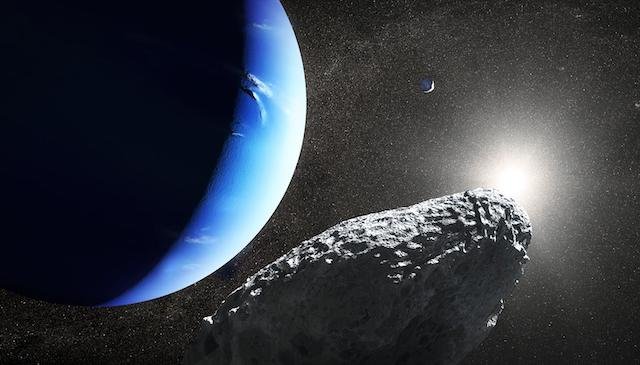
A new study using NASA’s Hubble Space Telescope has shown that a tiny, mysterious moon around Neptune discovered in 2013 may be a piece of a bigger moon, Proteus.
The study was reported by NASA/Goddard Space Flight Center.
In 2013, the scientists using Hubble found the tiny moon, named Hippocamp, was close to the much larger Neptunian.
This small moon is likely a chipped-off piece of the larger moon. It is only 1/1000th the mass of Proteus (which is 260 miles [about 418 kilometers] across).
Normally, the larger moon should have gravitationally swept aside or swallowed the smaller moon.
In the present study, the researchers found that a little piece of Proteus got left behind and today it is Hippocamp, the tiny moon.
The team supposed the smaller moon could have resulted from a collision with a comet billions of years ago.
Their hypothesis was confirmed by Voyager 2 images, which showed a large impact crater on Proteus, almost large enough to have shattered the moon.
Currently, the orbits of the two moons are 7,500 miles (about 12,070 kilometers) apart.
The researchers suggest that other moons in the outer solar system may have been hit by comets, smashed apart, and re-accreted multiple times.
This pair of moons of Neptune show that moons are sometimes broken apart by comets.
One study author is Mark Showalter of the SETI Institute in Mountain View, California.
One co-author is Jack Lissauer of NASA’s Ames Research Center in California’s Silicon Valley.
The research is published in Nature.
Copyright © 2019 Knowridge Science Report. All rights reserved.
Further reading: Nature.



